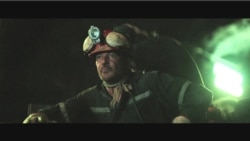"The 33" from director Patricia Riggen tells the story of the 2010 Chilean mining accident that trapped 33 miners 700 meters underground for 69 days.
When the hundred-year-old San Jose copper-and-gold mine collapsed over the heads of the miners, the world watched the events unfold on live television. Their eventual rescue after more than two months of agony cast the miners as the heroes in a drama they had no idea was being played out over their heads.
For the viewer, it is a foregone conclusion that disaster will strike as a truckload of miners enters the flimsy mouth of the mine. It is a matter of when and how, not if. A new miner from Bolivia asks veteran miner Mario Sepulveda if this is the only entrance to the unventilated mine. With lack of safety as an accepted fact of life, Mario answers stoically, “The only way in, the only way out.” By the time the 33 miners have descended into the bowels of the earth, the mine gives way.
It is a miracle that the collapse of tons of debris did not claim a single life. If this were not a true story, it would be a hard-to-believe, feel-good film. But somehow, all the men survived the cave-in and crammed themselves into the “refuge,” a 5-meter-wide space built to hold 30 souls with two or three days’ worth of food. The men made the supplies last for nearly two weeks before they were discovered and extra supplies were sent in through a drilled-in hole.
The film shows how Sepulveda, played by Antonio Banderas, stepped in as the leader of the group. He rationed food and water and helped create unprecedented discipline among the miners, who were in a state of shock and panic. “He is the guy that actually put some order down there and tried to stretch life as much as possible with the possibilities that they had and the resources that were minimal,” Banderas said.
The film is divided into two isolated worlds: The miners’ cavernous surroundings, where hunger and despair give way to feverish prayer and hallucinations, and Camp Hope, a makeshift encampment of desperate families outside the mine’s collapsed entrance.
Maria Segovia, the sister of one of the men, is as central to their rescue above the ground as Sepulveda is inside the mine. Academy Award-winning actress Juliette Binoche plays Maria.
“She was called the mayor of Camp Hope,” Binoche said of Segovia. The actress, who met with the Chilean heroine, called Maria “a force of nature.” She said Segovia was a woman so loud and determined, she commanded media attention as she was calling for action to recover the miners. According to Binoche, while the media's cameras were rolling, Segovia put the government’s feet to the fire and held them to their promise to do all they could to save the trapped men.
Binoche said of her role: “I had to show in a very short time, few scenes, that the force of these women really made the plan take off and save [their men]."
Hazardous rescue
Pressured by worldwide media coverage, the Chilean government keeps drilling. After 17 days, when the drill finally breaks through to the refuge, the miners attach a note to its edge announcing they are all alive. When the drill returns to the surface, there is cause for celebration, but the men’s rescue is not assured. A dense boulder the size of two Empire State Buildings blocks the drilling process. From this point onward, the film switches focus to the technically grueling and hazardous operation of bringing the men to the surface.
Finally, 69 days after the disaster, all 33 men are elevated to safety, one by one, through a small shaft in a NASA-designed capsule called the Phoenix.
The strength of "The 33" lies neither in its special effects nor its disaster plot, but in the true story. Though the tons of collapsing debris and the human drama inside and outside the mine add tension to the retelling, nothing can match the magnitude of the actual disaster and the international rescue operation five years ago. This is what gives the production gravitas.
However, the movie is short on character development. Aside from Sepulveda and Segovia, we learn very little about the rest of the players.
The film does call international attention to the dangers of mining, pointing out that 12,000 miners die every year around the world. But It also leaves a lot of unanswered questions, such as why the 33 men in the story received no compensation from the government, nor what, if anything, the Chilean government has done to improve mine safety since the accident.
Binoche met with some of the trapped miners during the production. She said many of them, including Sepulveda, were in a bad financial and mental state. She said, “There is no work available and some of the miners cannot work in the mines anymore because they have been traumatized by what happened to them, so, because they don’t have an education, they don’t know what to do.”
As often happens, real life, even the part of life that comes after a Hollywood happy ending, is anything but happy.







